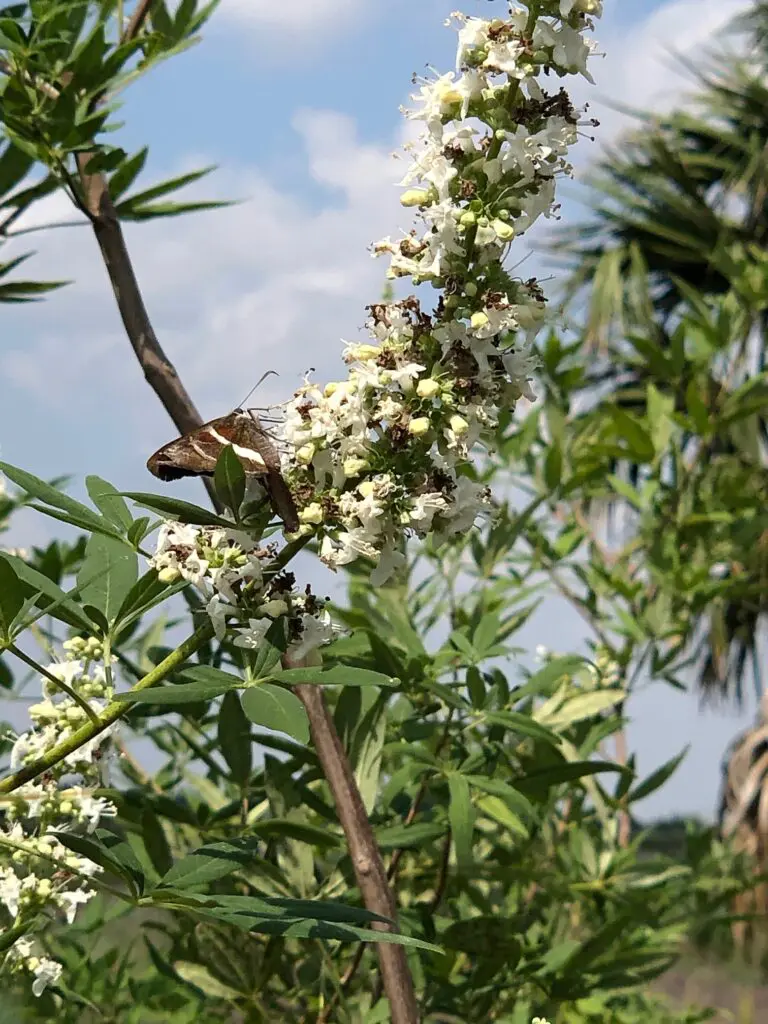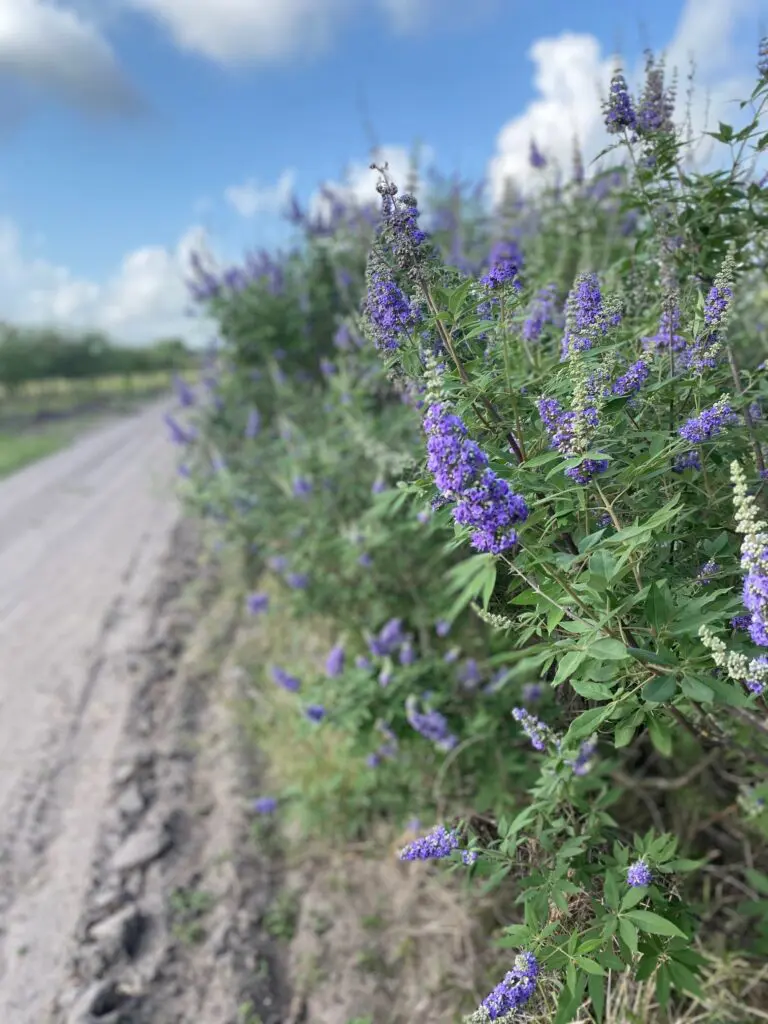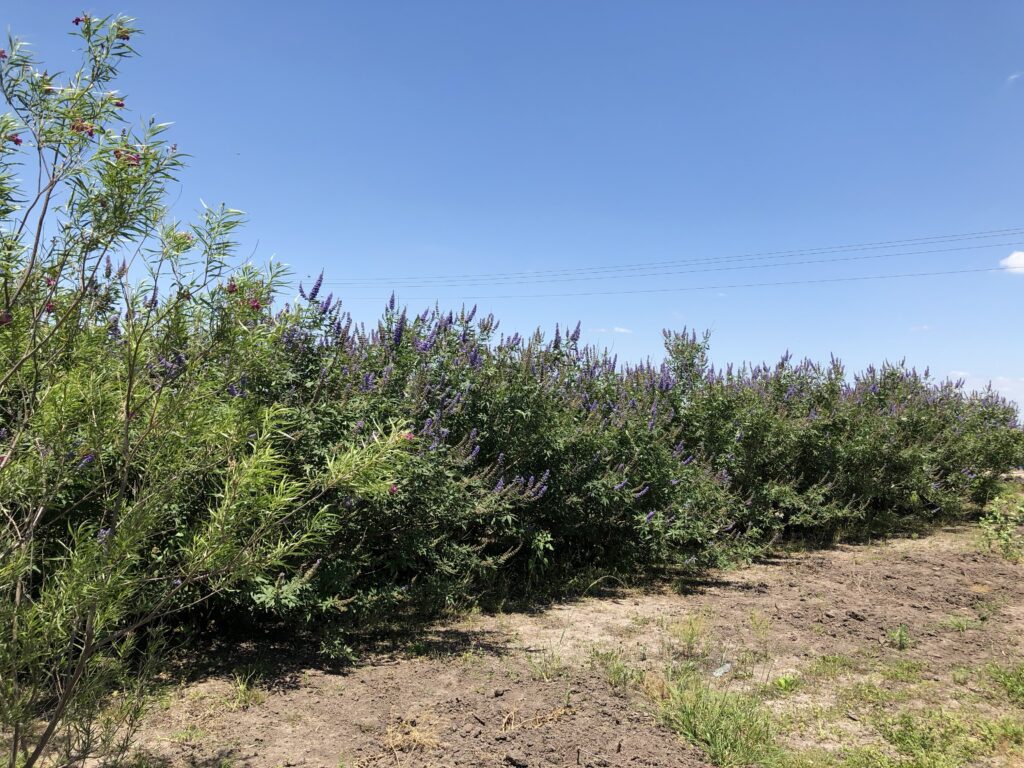Facts:
One of the many trees grown here is the Vitex, or Chaste Tree. Native to Southern Europe and Western Asia, vitex was introduced to the United States around 1670. This tree is in demand for its range of medicinal and herbal uses. It is also well sought out for a similar look to a lilac tree.

Interesting fact: this tree got its nickname “chaste” during medieval times where it’s believed the berries helped monks keep their vows of chastity.

Description:
A small tree that can be single-trunked or multi trunked with a wide-spread crown. Usually, the trunks are crooked or leaning so this tree has a unique appearance. It can grow to a height of 20 to 30 feet tall with a 20 to 30 foot spread. The Vitex is known to bloom purple flowers in late spring (May) throughout summer (August). Even though purple flowers are common, white or pink blooms can occur.

Characteristics:
The vitex tree tolerates our hot Texas summers! It loves to grow in well-drained soils and loves to be in full sun. It doesn’t require much water once established. During harsh winters there may be some die-back on the tree. This is an easy fix; prune the die-back, so the tree will grow back quickly. Pruning also allows for new growth to grow in the missing spaces and promotes the plant’s natural space.
Conclusion:
Vitex angus castus, or Vitex is a gorgeous specimen that can be trained for use as a shrub border or a small accent tree. The ‘Shoal Creek’ variety is a Texas Superstar selection so much so that the Texas Department of Transportation recognizes its toughness and plants it in highway medians. If you’re looking for a tree that’s great for attracting butterflies and is deer resistant, a vitex is a great choice!


Great article